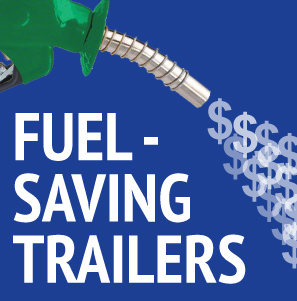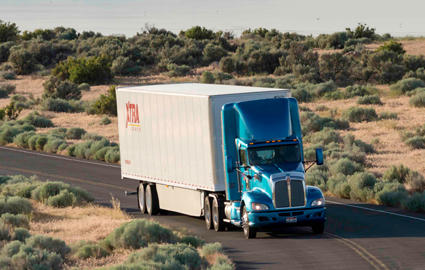
Would You Spend $20 to Save $40?
Between shipper demands and transportation constraints, your bottom line is in a stranglehold. Constrained capacity, fewer drivers, less autonomy—how do you keep your productivity high and protect your margin on every haul?
Turn to trailer technology.
Sure, trailer technology —in the forms of trailer telematics and equipment design—may cost a bit more, but they also can help you do more with less.
Equipment telematics have been around since the ’80s, but were focused mainly on power. They had one purpose: show where the equipment is.
Today, telematics are far more sophisticated and it’s easy to use them to improve the efficiency of all your assets —not just your tractors.
You can get reports that show not only your trailer’s location, but also how often it’s used, its past locations, and the number of days it’s been idle. You can even set up geo-fences around key locations and equip the trailer with an array of sensors to detect cargo and door status.
So what kind of trailer telematics would work best for you?
Here are some of the benefits carriers report:
- We can maximize revenue by repositioning idle or under-used trailers to more profitable applications.
- We can save money on rental cost by returning idle or under-used rentals sooner.
- We can better estimate how many trailers we'll need for future business because we have data that shows how we used trailers for past hauls.
- We can trim our fleet size because we have data that shows how many trailers we’re really USING.
Technology improvements touch the trailer itself, too. The trailer of today is not the trailer of 20 years ago. At its root, a trailer is still just a freight carrier.
But to meet ever-increasing shipper demands, trailer design had to evolve.
These days, the best trailers have:
- increased cube capacity
- floors rated for heavier freight
- damage-resistance to road conditions
- damage-resistance to loading/unloading issues
- air slide assist for repositioning tandem axles
- self-greasing dolly legs
- higher fuel efficiency
Government regulation has influenced some of this, particularly the fuel efficiency. In January 2013, the California Air Resource Board (CARB) mandated that any 53’ van or reefer inside California must be equipped with approved fuel-saving technology, such as aerodynamic side skirts, under trays, low rolling-resistance tires, etc.
Trucking companies had to spend some of their hard-earned profits to comply, but they soon discovered a benefit to this regulation, beyond being compliant out west: real fuel savings! The EPA estimates that side skirts coupled with low rolling-resistance tires save up to 6% in fuel.
How does that translate to dollars?
Here’s the data we used to calculate the savings*:
- You run your trailers an average of 3,000 miles a month.
- You get an average of 6.5 mpg across your fleet.
- Your average cost per gallon of fuel is $3.50.
- The EPA estimate of fuel cost savings is 6%.
*To illustrate how the math works, we made assumptions about miles run, average mpg and cost of fuel. Please insert your own numbers into the equations to see how much YOUR OPERATION can save.
Here’s the math for one trailer:
- 3,000 average miles / 7 mpg = 429 gallons of fuel
- 429 x $3.5 a gallon = $1501 fuel cost
- $1501 x .06 = $90 fuel cost savings
When you multiply that $90 by all the trailers in your fleet, it becomes clear how significant your monthly savings can be. Lower fuel cost means more profitable hauls. What does more profit mean to YOUR business?
Think technology is expensive? When you take into account fuel savings and a harder-working trailer that’s designed to stay on the road and out of the shop, you have a clear path to increased efficiency and higher profit.
Check out this handy fuel savings calculator. It does the math for you.

